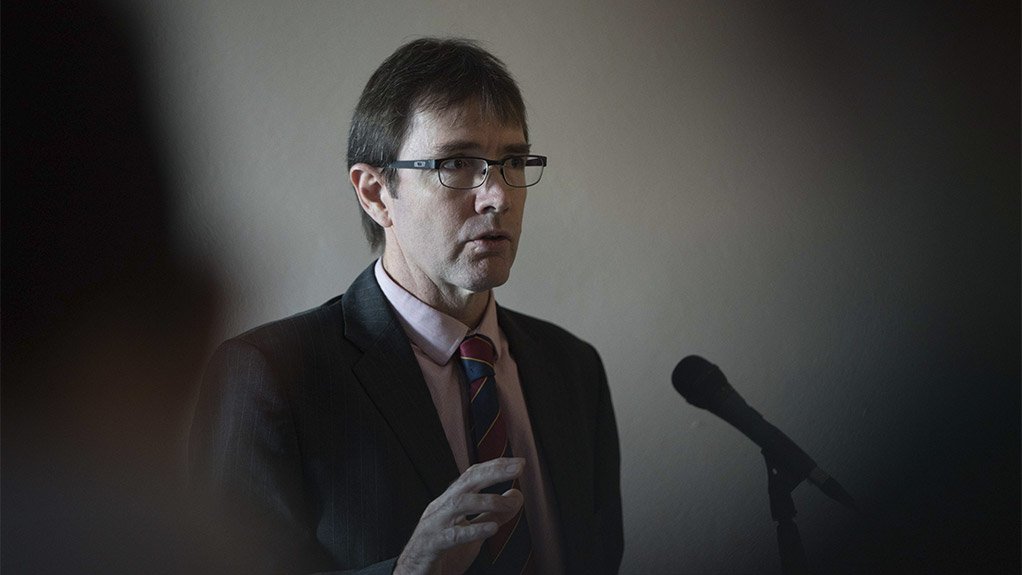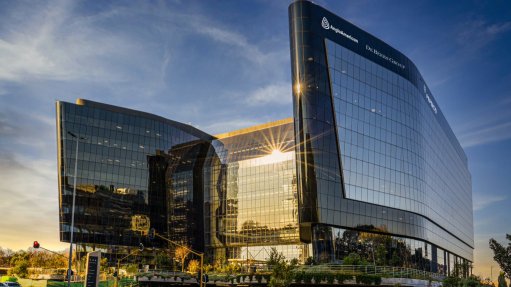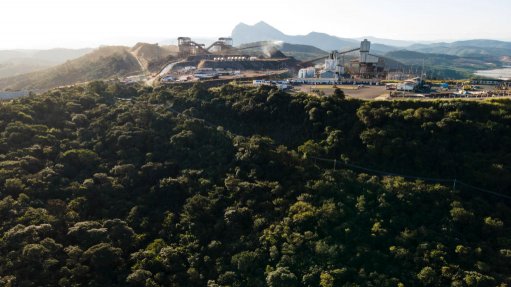Emerging miners highlight impact of energy, logistics constraints on economic growth
The South African economy is limited to 1.5% potential growth a year because there is no productivity growth. National productivity has declined for five years consecutively, highlighting the economy's structural constraints, including a lack of energy security and logistics capacity, mining industry body Minerals Council South Africa outgoing CEO Roger Baxter told delegates at a recent media briefing.
"Unless we stabilise energy availability and get logistics working to transport investment and value to the rest of the economy, we will not get the economy back on track," he said.
These structural constraints also threatened the future of the mining sector in South Africa because of their impact on junior, exploration and emerging miners (JEEMs), which were fundamental to the future of mining in South Africa, he emphasised.
"Logistics and energy constraints have taken off between two and three percentage points of South Africa's growth. Further, the cost of unserved energy needs is close to R84/kW. This is especially relevant in industrial environments, such as mines, smelters and refineries, which cannot run on 50% power," Baxter highlighted.
Further, the economy achieving only 1.5% growth a year on average over the past 12 years meant that growth was not even matching population growth, and this showed that the economy was caught in a structural straitjacket, he said.
However, the removal of the licensing requirements cap for private embedded generation represents the biggest structural reform in more than two decades and work the Minerals Council is doing in concert with the Presidency and committees is focusing on reducing the environmental authorisation and grid tie connection periods for embedded generation.
"In the mining industry, there are 9 GW of projects that companies are planning to invest in, valued at R160-billion. Some projects are already developed, such as the 50 MW Gold Fields South Deep solar plant," he noted.
The Minerals Council was working in national committees and Cabinet sub-committees alongside role-players such as industry formation the Energy Intensive Users Group of Southern Africa to overcome constraints to greater private sector participation, as well as the stabilisation and turnaround in performance of State-owned Eskom, added Baxter.
There were, however, still some specific constraints in terms of transmission network capacity. This was another area the organisation was working on in the National Energy Council and partnering with government to try to solve, including in terms of grid connection costs and potentially getting companies to invest in this infrastructure, he noted.
"The necessary reforms that have not yet been completed include the establishment of a separate transmission company. It is critical for this company to have its own balance sheet and ability to raise capital for accelerated investment in the transmission network.
"There is no network capacity in place to feed the renewable electrons from the Northern Cape and Eastern Cape to the rest of the economy," he said during the 'Challenges with energy security and transportation logistics: how has the Junior mining sector been impacted?' webinar on May 5.
Meanwhile, lessons from other regions that lost control of energy security indicated that it was paramount to recover energy security to avoid the losses arising from unserved energy needs, said energy sector organisation Energy Council of South Africa CEO James Mackay.
"Therefore, there should be a balanced approach to improving energy security, including gas, coal and renewable energy. However, long-term energy security is based on energy sustainability," he noted.
"The important point is that investment in energy is a big opportunity for the country, and we must determine how to use the development pipeline to anchor industrialisation and investment in the economy," he said.
South Africa's economic competitiveness would be driven by its 2030 ambitions, rather than its 2050 net-zero goals, he added.
"Looking at the technical supply side, if South Africa can have 56 000 MW of wind and solar, 5 000 MW of gas power and 8 000 MW of battery storage while decommissioning 12 000 MW of coal, this would enable the recovery of the energy availability factor to 65% and give the most achievable balance between emissions reductions and energy security," Mackay said.
RAIL IMPACT
The bulk commodity rail transportation story in South Africa was a catastrophe, with a decline of about 40% in the minerals volumes exported by the mining sector compared to targets. This saw a direct R50-billion loss in exports, said Baxter.
However, the freight rail corridors had been operating below nameplate capacity for many years, and the losses in exports were closer to R150-billion in 2022, when compared to nameplate capacity, as well as R30-billion loss in extra National Treasury earnings, he highlighted.
The mining industry accounts for 80% of State-owned Transnet's freight rail volumes and 50% of Transnet's overall revenue and dominates in terms of importance in the rail space.
The Minerals Council, therefore, called for the establishment of, and subsequently submitted its comments for the terms of reference of, the National Logistics Crisis Committee, he noted.
"We are working with the committee groupings to implement reforms to get more private sector participation on the rail network," he said.
Meanwhile, the Rail Policy White Paper clearly articulates private sector open access to rail as a national imperative, driven by government. However, the Minerals Council believes the strategy should be driven by the National Logistics Crisis Committee and private sector expertise.
"We [the mining industry] run rail all across the world, or we have strong partnerships with companies that run rail. The quickest way to bring capacity onto the rail network is through private concessioning, on a below or above track basis.
"These are international standard operating procedures, and unlocking performance on the freight rail network will result in significant benefits for the country not only from more export revenue, but also in terms of investment sentiment and attractiveness," Baxter said.
Further, 60% of South Africa's gross domestic product (GDP) was derived from exports and imports, or trade in goods, which highlighted how critically important logistics was for the economy, said Minerals Council South Africa chief economist Henk Langehoven.
Further, resources companies being able to move only about 55% of their export targets by rail meant that the resources had been moved onto road transport, which the Minerals Council was concerned was at capacity and contributed to greater safety risks, he added.
"Not being able to generate 2% of GDP [owing to logistics constraints] means that potential growth is lower than 1%, indicating how serious the situation is," he said.
Comments
Press Office
Announcements
What's On
Subscribe to improve your user experience...
Option 1 (equivalent of R125 a month):
Receive a weekly copy of Creamer Media's Engineering News & Mining Weekly magazine
(print copy for those in South Africa and e-magazine for those outside of South Africa)
Receive daily email newsletters
Access to full search results
Access archive of magazine back copies
Access to Projects in Progress
Access to ONE Research Report of your choice in PDF format
Option 2 (equivalent of R375 a month):
All benefits from Option 1
PLUS
Access to Creamer Media's Research Channel Africa for ALL Research Reports, in PDF format, on various industrial and mining sectors
including Electricity; Water; Energy Transition; Hydrogen; Roads, Rail and Ports; Coal; Gold; Platinum; Battery Metals; etc.
Already a subscriber?
Forgotten your password?
Receive weekly copy of Creamer Media's Engineering News & Mining Weekly magazine (print copy for those in South Africa and e-magazine for those outside of South Africa)
➕
Recieve daily email newsletters
➕
Access to full search results
➕
Access archive of magazine back copies
➕
Access to Projects in Progress
➕
Access to ONE Research Report of your choice in PDF format
RESEARCH CHANNEL AFRICA
R4500 (equivalent of R375 a month)
SUBSCRIBEAll benefits from Option 1
➕
Access to Creamer Media's Research Channel Africa for ALL Research Reports on various industrial and mining sectors, in PDF format, including on:
Electricity
➕
Water
➕
Energy Transition
➕
Hydrogen
➕
Roads, Rail and Ports
➕
Coal
➕
Gold
➕
Platinum
➕
Battery Metals
➕
etc.
Receive all benefits from Option 1 or Option 2 delivered to numerous people at your company
➕
Multiple User names and Passwords for simultaneous log-ins
➕
Intranet integration access to all in your organisation





















